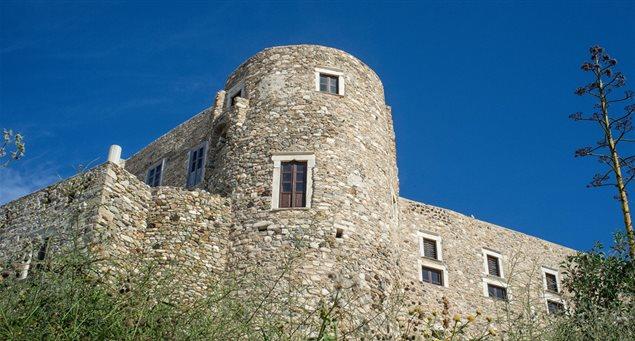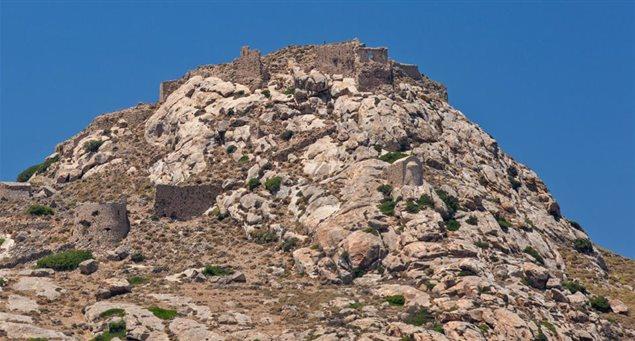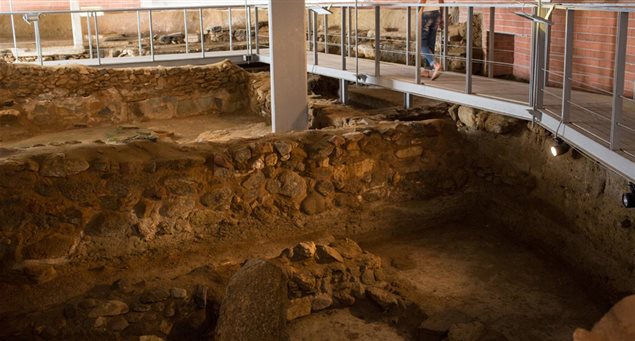
Around 1207 AD, the Venetian Marco Sanudo occupied Naxos and Andros, and founded the Duchy of the Aegean Sea with Naxos as the capital –thereby ushering in the Latin ascendancy in the region which lasted for centuries. Sanudo gradually conquered all the Cycladic islands, except Tinos and Mykonos which were controlled by the Ghisi family.
Despite their Venetian origins, the Sanudos acknowledged as superior authority the Latin Emperor of Constantinople (conquered in 1204) rather than Venice, towards which they followed an independent policy –as far as the geopolitical conditions of the era allowed.
Friction with Venice grew and the Duchy ultimately became a Venetian protectorate.
According to the local tradition, Sanudo divided the island into feuds which were allocated to the Latin nobility. Shortly before his death in Venice in 1228, he ceded the monastery of Christ Photodotis to the Order of Benedictine monks.
The period of the Sanudo ascendancy was marked by turbulence, as they were forced to be on a continuous war footing to deal with the Ghisis, the pirates roaming the Aegean, Venetian interventions, as well as the Byzantine fleet of Emperor Vatatzes of Nicaea who had never abandoned his claims on the Cyclades.
The dynasty produced seven dukes.
The last one, Niccolo Dalle Carceri, was murdered in 1383 by Francesco Crispo, the pro-Venetian ruler of the island of Milos, during a hunting outing near the village of Melanes.
Crispo, who had married into the Sanudo family, took over the Duchy and the dynasty he founded produced a line of 12 dukes.
When the renowned Ottoman admiral Hayreddin Barbarossa conquered the Cyclades in 1537-38, the Duchy of the Aegean Sea already was already in a state of decline and administrative disarray.
The Duke of Naxos, Giovanni IV Crispo, was allowed to remain in charge of his dominion on condition that he paid heavy taxes to the Ottoman treasury.
This exacerbated the dire economic situation and his son, Jacopo IV Crispo, who succeeded him upon his death in 1564, was imprisoned by the Turks two years later, following representations to Sultan Selim II (1566-1574) by local Greek notables who asked for greater fairness in the administration.
The end of the Crispi dynasty, however, ushered in new Latin feudal lords. Prominent families, like Barozzi, Grimaldi, Justiniani, Della Rocca and De Modena either bought land or acquired it through marriage, creating large estates. The “Place of Filoti” was a case in point.
The new order, in fact, brought about an intensification of the conditions of serfdom for the local population.
The Turks did not colonize Naxos and the other Cyclades. Few settled on the islands, due to the fear of pirates, and very few inhabitants converted to Islam. The Sultan ceded the Duchy to his protégée Iosif Naze, a Portuguese Jew adventurer and banker who had converted to Christianity and adopted the Portuguese name of Joao Miquez. Naze never visited his dominion, appointing as ruler in his place Francesco Coronello –a man of his trust.
Naze maintained the old customs and Latin feudal laws but under Sultan Selim’s successor, Murat III (1574-1595), his power weakened and he finally met his death by stoning in 1579.
In 1580, the Sultan conceded particularly favorable privileges to the Greek islanders.
The old head tax remained in place but they would now enjoy complete religious freedom and could build churches as they wished. The old laws and customs were also preserved, while silk, wine and foodstuffs were completely tax exempt on the islands.
These privileges were later confirmed by Sultan Ibrahim (1640-1648) and formed the basis of a constituent Charter for the Cyclades under Ottoman rule.
The legal regime of the so-called capitulations, which was led by France and allowed special trading and other privileges to Western residents of the Ottoman Empire, had already been initiated in the 16th century and gathered pace in the 17th century. A result of this influence was the appearance of the Jesuit and Franciscan monastic orders on Naxos, as well as the founding of an Ursuline monastery. All three orders also founded schools on the island.
Naxiots rebelled against their Latin and Turkish masters several times.
In a bold conspiratorial move in 1595, representatives of 15 islands met on Naxos and discussed plans to overthrow Ottoman rule.
There were revolts against the Frankish masters in 1563, 1643, 1670 and 1681. Even more significant revolts took place in the 18th century, led by members of the Politis family and centering in the Tower of Markos Politis in the village of Akadimi, in the Tragea basin.




